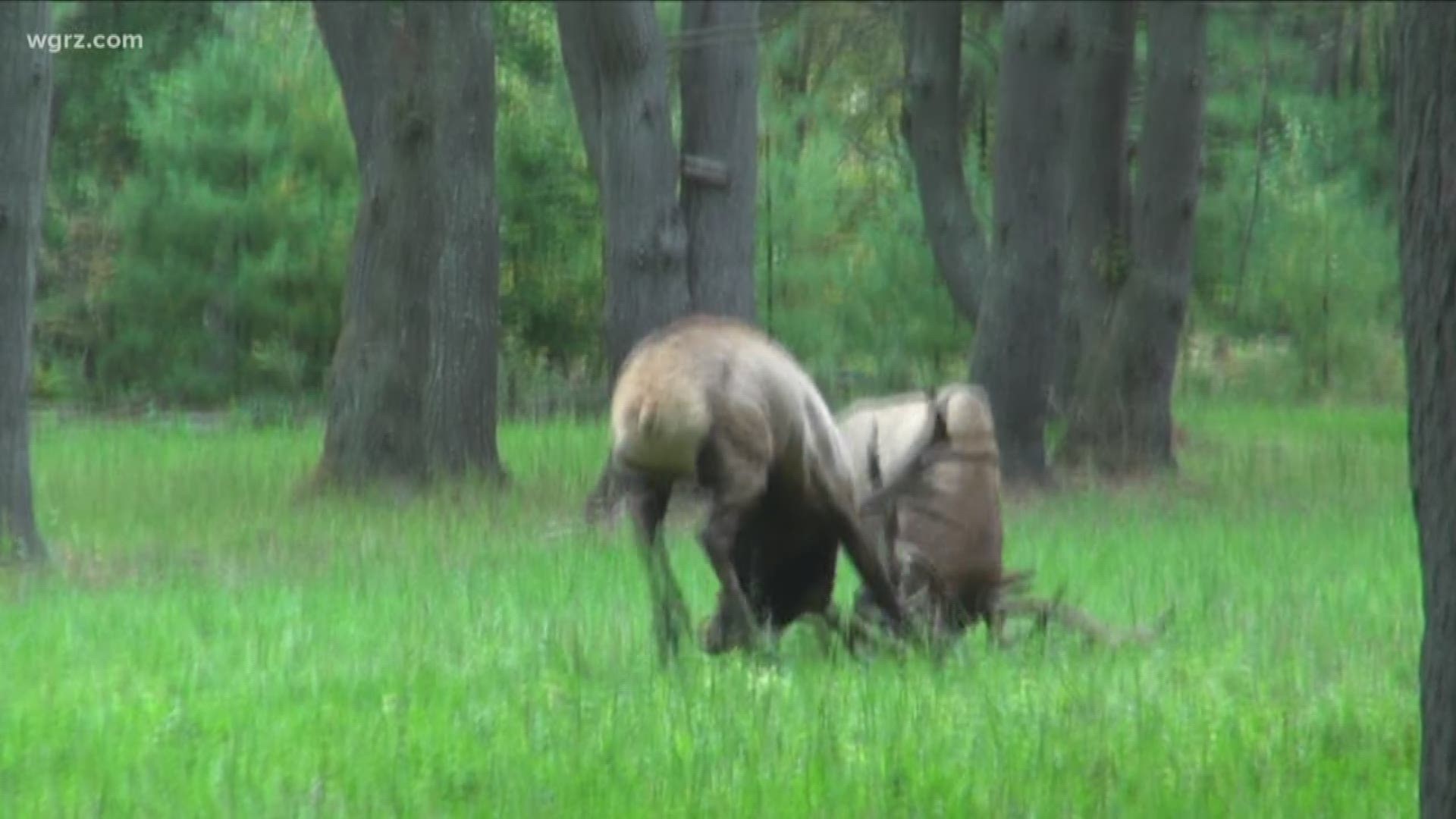BENZETTE, P.A. - Whenever there is a clash between ecology and economy, it's usually ecology that loses out. But often the two can live comfortably together.
A shining example of this thrives in Benezette, Pennsylvania. The small town is home to a growing population of Elk, as well as a beautiful visitor's center to educate people about the animals and the surrounding environment.
This magnificent herd has enriched local resources both man made and natural.
"It was put here to put out a clear conservation education message, but also to drive economic development around this industry called Elk watching and eco-tourism," explains Rawley Cogan, President/CEO of the Keystone Elk Country Alliance.
"It was intentional. People were already coming to view this animal and to be in this two million acres of public land, but they really had no destination, no place to go. "
The history of Elk in North America has not always been a good one. Once roaming over much of the Northeast from Canada to Pennsylvania, Eastern Elk populations were in steep decline by the 1800's and in September of 1877 the last Elk was killed.
"It was a combination of loss of habitat and conflict with man, primarily agriculture, man building roads and so forth, so there were conflicts there."
Pennsylvania soon took action to repair what they had destroyed.
In 1913, Rocky Mountain Elk were reintroduced to the state, imported from Yellowstone out West where they had an overpopulation problem The Fifty Elk purchased cost about thirty dollars each.
"The Elk we have today are the offspring of those re-introductions," says Cogan "We have not had a re-introduction, since the only one in 1913 through '26."
Since the re-introduction, the population has waxed and waned, again reaching low points in the 1950's and 70's. Browsing damage to local farms caused the Elk to be looked at as nuisance animals, and they were allowed to be culled if considered such.
Public sentiment was not on the side of the Elk, but that eventually changed, and Cogan says that when it did, that made all the difference.
"This herd can survive here, if man wants it to happen. So, you start to address conflicts, you start to change minds and you start to erect fences and create forage plots, do research and talk to the public, and the population responded, and responded, and continued to respond, and it does to this day."
Now the herd is a valued part of the community. Although hunting is still permitted, the area surrounding Benezette is a sanctuary, where no hunting is allowed, an area where these majestic mammals can live their lives in peace, while also enriching those of their human benefactors and the local economy. Cogan says.
"This is a much better place than it was thirty, thirty five years ago. People are supporting our facility, they're supporting the local businesses, one feeds the other. It works out extremely well."
For more information, click here

